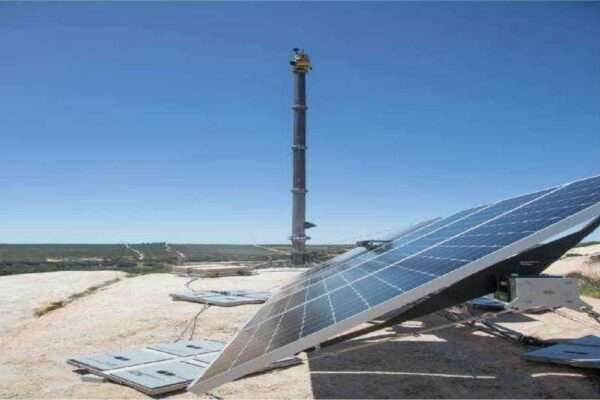The Trump administration announced Thursday they have already put up dozens of high-tech surveillance towers to detect border crossing attempts along remote sections of the U.S.-Mexico border and plans for 200 within the next two years.
A U.S. Customs and Border Protection (CBP) spokesperson described the surveillance towers, known as the Autonomous Surveillance Towers (AST) system, in a statement provided to American Military News. The towers employ a radar system to detect movement, after which the tower points a camera to the location of the movement detected and uses an algorithm to identify people and vehicles potentially approaching the border.
The tower is designed to alert border patrol agents to the location of a crossing attempt and potentially intercept those attempting to cross. The spokesperson said the towers scanning, detection and alert are “nearly instantaneous.”
The spokesperson said the towers provide a 3-mile in diameter circle of surveillance, effectively allowing surveillance for up to 1.5-miles in any direction, including south of the U.S. border.
“The coverage may be adjusted, as required to accommodate the terrain/environment and mission,” the CBP spokesperson said. “The autonomous scanning of the towers enables agents to carry out regular duties without being tied to a desk staring at monitor screens,” the spokesperson said.
In a separate press release on the CBP website, the agency further detailed the AST system’s features. The system is designed to work independently of the electrical grid, and use 100 percent renewable energy.

CBP Autonomous Surveillance Towers (AST) system, supported by a solar panel power system. (CBP photo/Released)
The CBP provided an image of one of the towers, appearing to be supported by a pair of solar panels. The off-grid nature of the towers also allows agents to relocate the towers to different areas within two hours, according to the CBP press release, “providing frontline agents with a highly flexible, autonomous system that enhances situational awareness, agent effectiveness, and safety.
CBP announced four of the towers had already been employed in the San Diego Border Patrol Sector and has procured 56 additional towers. The CBP release indicated the AST systems had been adopted as a “program of record” making it a line item expense for future years. The agency said it is on a path to procure and deploy 140 additional towers by the end of the 2022 fiscal year, for a total of 200 towers.
“These towers give agents in the field a significant leg up against the criminal networks that facilitate illegal cross-border activity,” said Border Patrol Chief Rodney Scott. “The more our agents know about what they encounter in the field, the more safely and effectively they can respond.”
The Washington Post, also reporting on the new towers described them as a “virtual wall” program like ones favored by Democratic lawmakers over the physical wall favored by President Donald Trump. The Post said the use of the towers “raises an obvious — if awkward — question for homeland security officials as Trump spends billions of taxpayer dollars to speed up his border wall project.”
In the CBP statement to American Military News, the CBP spokesperson noted surveillance tower systems have been employed in other place in the past, but disputed the idea that the towers will act as a virtual wall that can entirely replace physical barriers. The spokesperson said the towers instead “are intended to augment current Border Security assets, such as the wall and not to replace current tower tech.”
The CBP spokesperson also said the towers are intended for remote areas of the border while they cannot be used as effectively in urban border areas.
“Urban environments overwhelm radar-based systems, generating a large number of false alarms,” the spokespwerson said.



